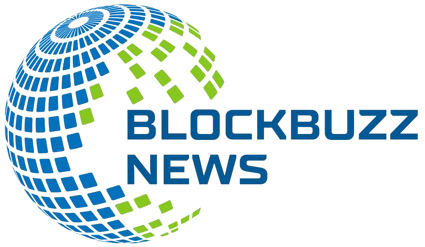The Necessity to Build and Launch an Ecosystem on Genesis Day
Imagine if Microsoft released the Xbox and there were no games.
On the day on which the Ethereum genesis block is created, many of the elements of the ecosystem — core infrastructure, mining network, user app browser and applications — will be in place. Granted there will be an enormous amount of development to do beyond the genesis to craft Ethereum into a sophisticated, decentralized consensus (decentcon) application platform. But on day one, there will be “launch titles.”
Originally, when the idea behind Ethereum was conceived in November, the intent was for it to be a simple “altcoin” (in fact, a meta-protocol on top of Primecoin) with a scripting language built in. Over time, however, as we realized the project’s potential our scope necessarily grew, and our current intent is to release a flagship product called the “EtherBrowser:” a browser that can browse both the old-school Internet and the decentralized web (Web3.0). From the moment of inception of the Ethereum network, the following elements in the EtherBrowser and the ecosystem will be operational:
- a fully functional implementation of the Ethereum blockchain which enhances the Bitcoin technology with one-minute block times and stronger security (GHOST protocol), which decentralized applications (“ÐApps”) can use for anything that requires consensus (eg. currency and token systems, name registries, proof of existence, etc., …)
- a fully functional peer-to-peer protocol, which ÐApps can use to send messages between users. For example, a decentralized messaging ÐApp will use this protocol for actual message sending, but the blockchain for registering user accounts.
- an elegant, browser-and-app-store user interface for using ÐApps
- network nodes (miners) that process transactions and computations, secure the network through a consensus process and are compensated by fees and the issuance of new ether
- a standard set of “built-in” utility-level ÐApps: distributed wallet, distributed ID system, distributed reputation system, distributed messaging system, distributed name registry service, distributed catalog of distributed applications, etc., will serve as just a few of the low-level utilities on the system
- a standard set of built-in tools for both developer and end-user: blockchain explorer, contract explorer, transaction constructor, encrypted messaging tool, signature tool, authentication tool, …. And a debugger will be available for the hard core.
And soon after the genesis we hope to see a rich set of third-party distributed applications, e.g. distributed storage services, distributed notary services, distributed exchange services, distributed escrow and arbitration services, financial contracts, insurance contracts, lending services, purposed reputation systems, games, entertainment services, etc., … Each of the ÐApps in the different business verticals will be able to make use of the lower level, system utility ÐApps like the ID and reputation systems.
Without operational distributed applications, Ethereum is a hollow shell. In order to have a broad offering of distributed applications from day one, non-profit, public-good elements must be built in conjunction with commercially driven applications in competitive markets. From this requirement, Ethereum takes its dual mandate.
It can be argued that certain elements within an ecosystem should be developed for the common good, and do not benefit from a profit motive. Certain other elements, are better developed in a competitive, for-profit context. For instance, it makes some sense to develop a coherent, large-scale, systematized road system for the public good, using public tax dollars. But it probably does not make sense to build cars with public tax dollars, since development under the pressures of free market competition forces the design and production of better products and benefits the market as a whole.
Dual Mandate: Collaborative Non-Profit and For-Profit Development
Two hub organizations will lead the Ethereum Project under dual mandate: a for-profit entity based in Zug, Switzerland, and a non-profit organization, based in Toronto, Canada. Both of these organizations will be constructed in a fashion that will enable each to remain strong and financially independent to ensure years of development and growth of the ecosystem.
The Ethereum ecosystem will initially be constructed by the non-profit and for-profit entities in partnership, ideally with broad participation from many other independent entities. The founding leadership will put into place mechanism that ensures that the foundational elements of the ecosystem are built and maintained in a fashion that adheres to the founding principles. Funding and independence will be guaranteed to the organizations (either state-registered businesses or eventually blockchain-registered businesses) that guide the various avenues of development of the core infrastructure.
At the same time, human economies are largely about free market commerce (or should be), so the non-profit organization, to some extent — and especially the for-profit entity — will assist independent business efforts in the space to launch and flourish. This assistance can take a variety of forms from providing resources and guidance, to maintaining support channels, to the creation of joint ventures.
The Hybrid Organization Model
“MOZILLA IS ONE SUCH [HYBRID NON-PROFIT/FOR-PROFIT] ORGANIZATION AND, AS I LOOK AROUND, I SEE OTHERS. THERE IS ALOT [SIC] OF UPSIDE TO HOW THESE ORGS WORK, ESPECIALLY THE POTENTIAL TO MOVE MARKETS TOWARDS THE PUBLIC GOOD AT A GLOBAL SCALE.
“…THE MORE I DIG, THE MORE I AM CONVINCED THAT ORGANIZATIONS LIKE MOZILLA, WIKIPEDIA, KIVA, MIRO AND SO ON THAT MASHUP MISSION, MARKET AND THE CULTURE OF THE WEB REPRESENT A NEW PATTERN WORTH UNDERSTANDING.
“MISSION + MARKET + WEB HYBRIDS MATTER BECAUSE THEY CAN WIELD THE POWER NEEDED TO MOVE MARKETS AT A GLOBAL SCALE, WHILE STILL LOOKING OUT FOR THE SMALL GUY, TAKING THE LONG VIEW AND STAYING TRUE TO THEIR PUBLIC BENEFIT MISSION. THEY SHOW US HOW ORGANIZATIONS COULD — AND MAYBE SHOULD — WORK IN THE FUTURE.”
- MARK SURMAN, EXECUTIVE DIRECTOR, MOZILLA FOUNDATION
Trolltech/Digia (Qt), WordPress, Red Hat, Google Android and the Open Handset Alliance, The Mozilla Organization and several others have pioneered the dual mandate approach and built thriving ecosystems and successful companies. The model that Sun developed in the late 90s is also instructive.
Sun Microsystems (now Oracle) developed the Java computer language and libraries in house. As innovative as it was, it is likely that it would not have acquired such large market share, had Sun not realized that they, as a for-profit company, could not control a foundational aspect of software development that it, and many of its competitors, were expected to use. To address this conflict of interest, Sun open sourced Java and developed the Java Community Process to shepherd growth of the platform in a nonpartisan fashion.
Ethereum is an open source project and will remain open source. And the Ethereum Project, under the auspices of its non-profit foundation will create a community development process philosophically similar to the Java Community Process. In fact, Ethereum, thus far has been developed under a less formalized community development process.
The Ethereum non-profit entity will specify and guide the development of the core Ethereum infrastructure. It will employ a non-partisan community development process and will develop, conduct and support research initiatives in the general cryptocurrency space. The non-profit will have a membership composed originally of the Ethereum founders, and soon will add other independent leaders in the emerging space.
The Ethereum for-profit entity will be charged with the task of developing certain elements of the core infrastructure in collaboration with the non-profit entity and building out the Ecosystem with distributed application services and businesses that it develops itself, funds, or otherwise supports.
We believe this to be the most effective structure in the near term. That said, we are DAOists (where DAO means Distributed Autonomous Organization). We will look to move as much infrastructure and governance as soon as possible onto the blockchain. Our OpenSalary system will probably be the first component to move to the blockchain. Please stay tuned for more on the topics of OpenOrganization and DAOification of the two organizations. Our goal, if we do our jobs properly, is to put ourselves out of (state-registered) business.

